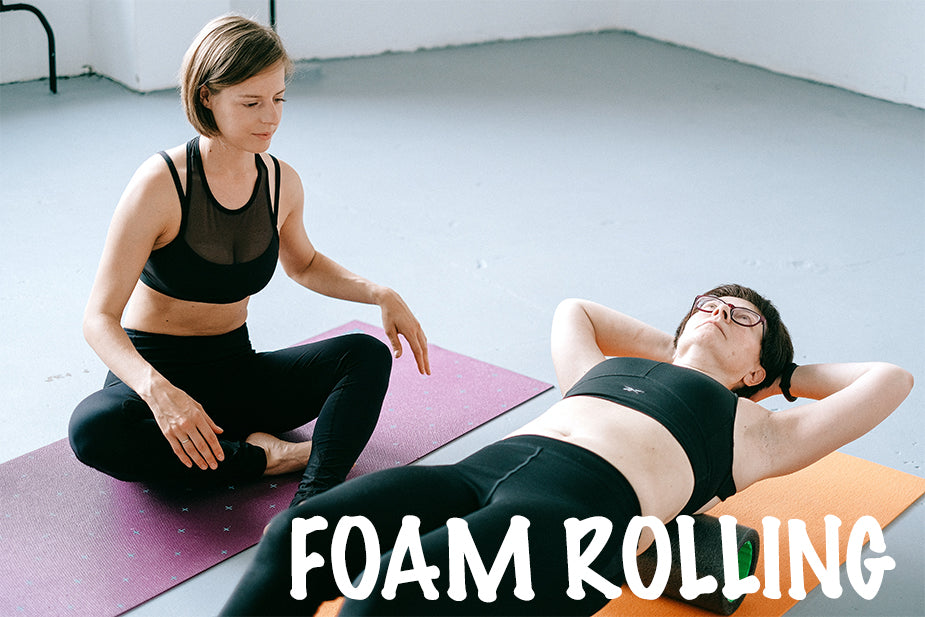
Foam Rolling! How to incorporate foam rolling and self-massage for muscle recovery.
Share
Foam rolling and self-massage have become popular methods for muscle recovery among athletes, fitness enthusiasts, and even non-athletes. These techniques involve using a foam roller or other massage tool to apply pressure to your muscles, promoting blood flow and easing tension. In this article, we will explore how to incorporate foam rolling and self-massage into your muscle recovery routine.
Benefits of Foam Rolling and Self-Massage: Foam rolling and self-massage have many benefits, including:
- Reducing muscle tension: Foam rolling and self-massage can help reduce muscle tension and stiffness, which can occur due to intense exercise or prolonged periods of inactivity.
- Improving range of motion: By promoting blood flow and reducing muscle tension, foam rolling and self-massage can help improve your range of motion, making it easier to move your body.
- Promoting muscle recovery: Foam rolling and self-massage can help promote muscle recovery by increasing blood flow and reducing muscle soreness.
- Reducing injury risk: By promoting better muscle recovery, foam rolling and self-massage can help reduce the risk of injury during exercise or other physical activity.
- Choose the right foam roller: Foam rollers come in a variety of densities and sizes, so it’s important to choose the one that best suits your needs. A softer foam roller may be better for beginners, while a firmer foam roller may be more appropriate for those with more experience.
- Target specific muscle groups: Focus on one muscle group at a time, such as your quads, hamstrings, or calves.
- Apply pressure: Place the foam roller under the targeted muscle group and slowly roll back and forth, applying pressure to the muscles. If you find a tender spot, pause and apply more pressure to that area.
- Roll for 1-2 minutes: Roll each muscle group for 1-2 minutes, focusing on any areas that feel tight or sore.
How to Self-Massage: Self-massage is another effective technique for muscle recovery. Here are some steps to help you get started:
- Choose the right massage tool: There are many types of massage tools available, including massage balls, sticks, and handheld massagers. Choose the one that best suits your needs.
- Target specific muscle groups: Focus on one muscle group at a time, such as your neck, back, or legs.
- Apply pressure: Use the massage tool to apply pressure to the targeted muscle group, focusing on any areas that feel tight or sore. Move the tool in a circular motion, applying pressure as needed.
- Massage for 1-2 minutes: Massage each muscle group for 1-2 minutes, focusing on any areas that feel tight or sore.
Tips for Foam Rolling and Self-Massage:
Here are some tips to help you get the most out of your foam rolling and self-massage routine:
- Start slowly: If you’re new to foam rolling or self-massage, start slowly and gradually increase the intensity of your routine over time.
- Don’t overdo it: While foam rolling and self-massage can be beneficial, it’s important not to overdo it. Too much pressure or too much time spent on one muscle group can cause injury or soreness.
- Listen to your body: If a certain muscle group is particularly sore or tender, focus on that area and adjust the pressure accordingly.
- Use proper form: When foam rolling or using a massage tool, use proper form to avoid injury and maximize the effectiveness of the technique.
Conclusion:
Foam rolling and self-massage are effective techniques for muscle recovery and can be easily incorporated into your daily routine. By using foam rolling and self-massage, you can reduce muscle tension, improve range of motion, promote muscle recovery, and reduce the risk of injury. Remember to start slowly, listen to your body, and use proper form to get the most out of these techniques. Whether you’re an athlete or just looking to improve your overall health and fitness, foam rolling and self-massage can be a valuable addition to your muscle recovery routine.
